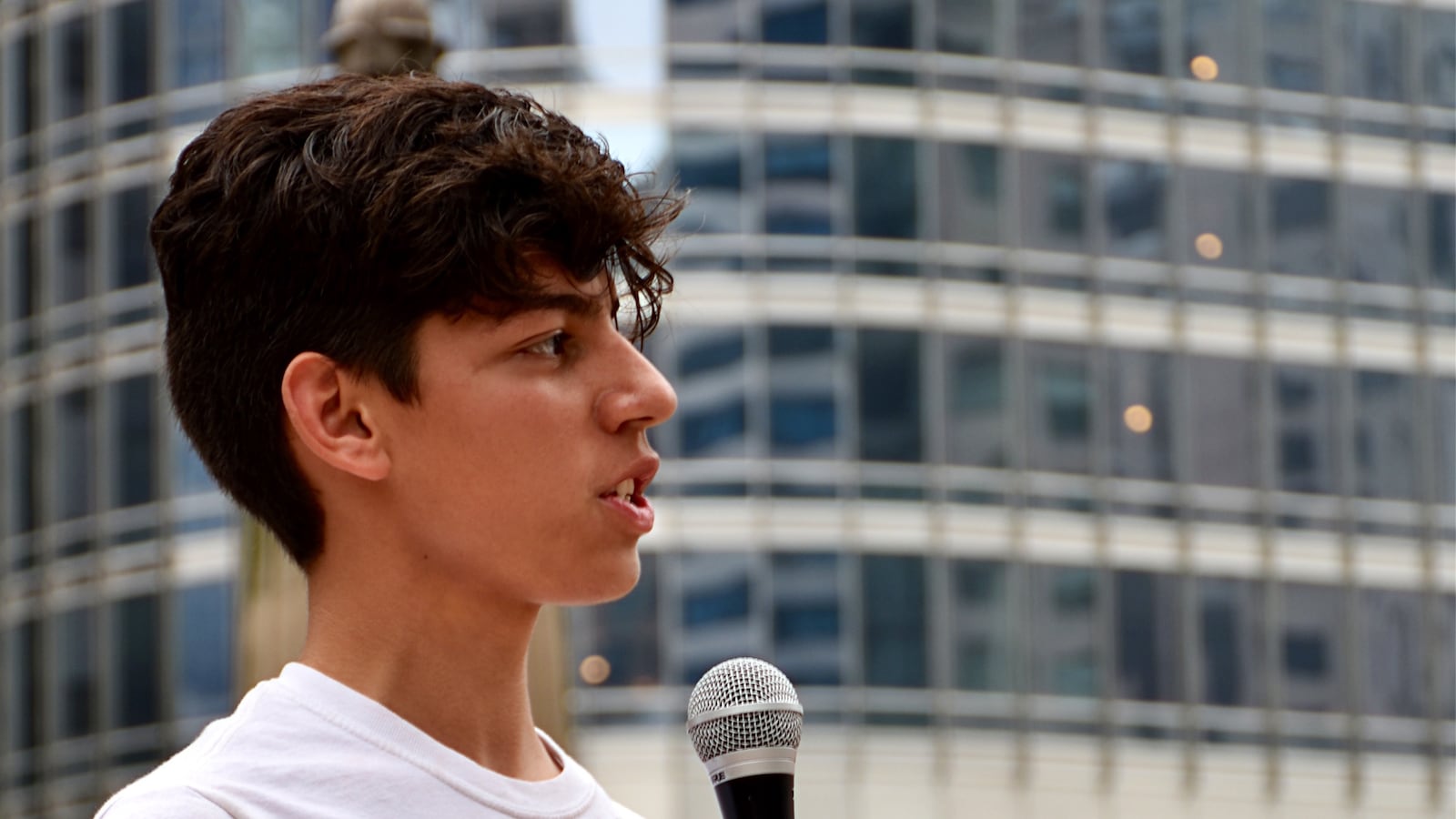Trevon Bosley’s brother was murdered while attending band rehearsal at church. Shot from the street while helping a friend with drums in 2006, he was just one of the 471 people killed by gun violence that year in Chicago.
Through a peer youth council at St. Sabina Church in Auburn Gresham, Bosley, 20, became an outspoken student activist, and tonight he will join hundreds of students converging for an annual peace march that starts at the church. Chicago’s tradition of youth activism will be on full display, but the local students are getting a high-powered boost. Joining them are Chicago musicians Chance the Rapper and Jennifer Hudson and former Arizona House Rep. Gabrielle Giffords, who was shot in 2011 at a public meeting with constituents. There will also be another set of special guests: the students of Marjory Stoneman Douglas High School in Parkland, Fl., where a February shooter killed 17 students and teachers.
All week long, local student activists have been rallying and some Parkland students have lended an assist. Several staged a sit-in in City Hall on Monday to protest the proposed construction of a $95 million police academy on the West side and call for an elected school board. Others staged a die-in on in front of Trump Tower on Tuesday to commemorate the second anniversary of the Pulse nightclub shooting.
Chalkbeat sat down with five Chicago student activists to hear why they take action and what they hope to achieve.
"Gun violence isn’t mainly just about mass shootings. These kinds of things happen in Chicago, Baltimore 24/7."
Alycia Moaton
East Woodlawn resident Alycia Moaton, 17, attends Kenwood Academy. She’s part of Good Kids Mad City, a new advocacy organization formed by Chicago and Baltimore students. This past Monday, Good Kids Mad City members were central figures in the City Hall sit-in this past Monday.
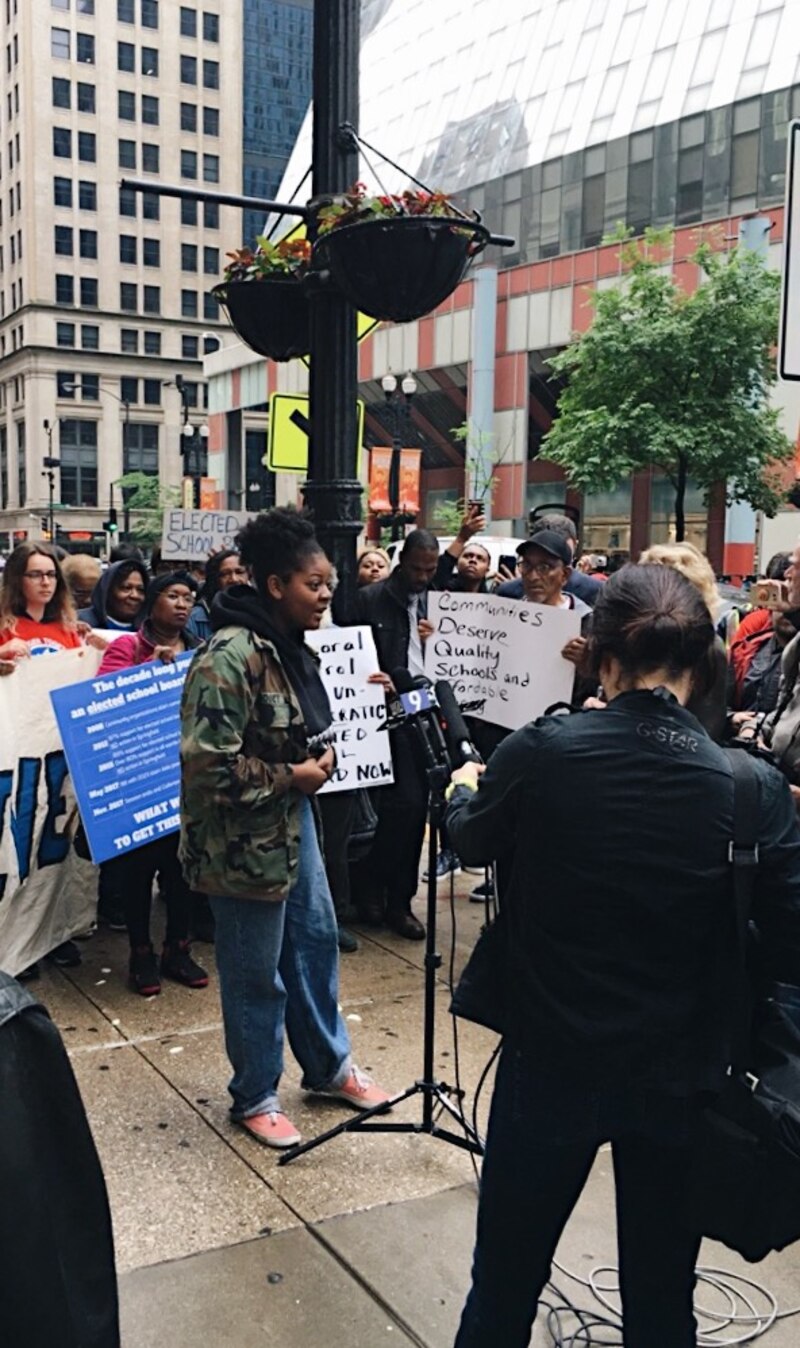
On becoming an activist: I grew up in Oak Park for about 10 years of my life. Then I moved into Chicago. Going to public schools on the South Side, it was like a completely different world. A lot of the students—their first thought is whether or not they’ll be able to go to school that day because they’re worrying about getting shot on the way there. When I got to experience both sides, experience what it’s like to not fear going to school, I could see just how messed up it is.
Starting off around three years ago, I went to a lot of protests and youth summits, and that turned me into wanting to be part of an organization. That’s how I got in touch with Good Kids Mad City. Good Kids Mad City came to be after the Parkland shooting, from the idea that gun violence isn’t mainly just about mass shootings. These kinds of things happen in Chicago, Baltimore, 24/7, and it’s as national as a mass shooting.
What she hopes to achieve: One of my main goals is that [the rally tonight] gets a lot of national coverage. The Parkland students are allowing us to make the narrative about Chicago. I hope people leave with the idea of not treating gun violence as just a local issue, with the idea that this isn’t normal. This shouldn’t be viewed as “Oh, this is just how Chicago is, Chicago is just a violent city.”
The big goal is to have people change their narrative about what gun violence in Chicago is, that it has to be taken way more seriously than just a local issue.
"When people think of Chicago, they think of the most violent city. I hope that they think of it as the home of the young leaders."
Diego Garcia
Brighton Park resident Diego Garcia, 16, led 50 local teenagers to the March for Our Lives rally in Washington, D.C. in March. Earlier this week, he participated in the die-in outside Trump Tower. He is also a member of Chicago Strong, the citywide youth group organizing tonight’s rally.
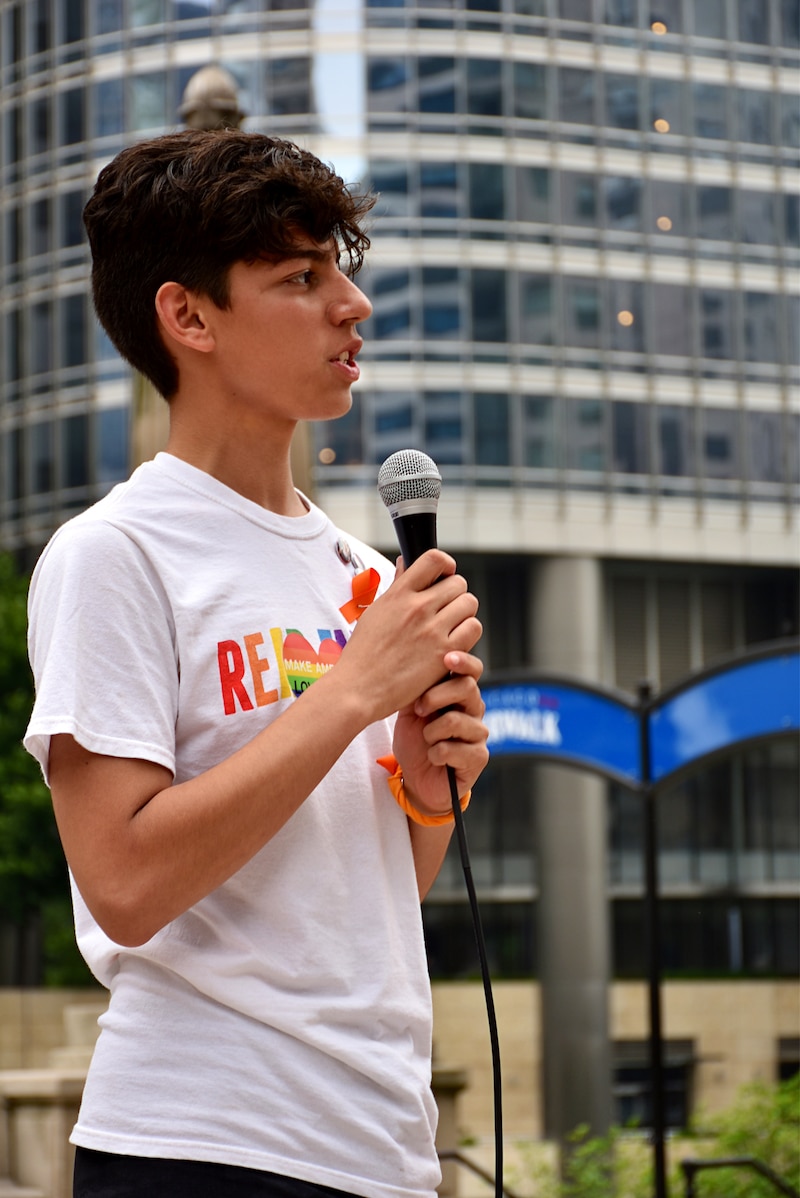
On becoming an activist: The parents in my community are immigrants, and so are my teachers and my friends. After Trump became president, they felt like, if they speak up for what they believe in, they’re putting themselves in danger of being targeted by the government.
I decided that if I really had nothing to lose, then I would be the voice for them. I’m a citizen of the U.S., and just being a citizen, I have many rights that a lot of other people feel like they don’t have—the right to voice my opinion, to vote about my future.
After the Parkland shooting, my priest said that he would support me in taking 15 teenagers to Washington, D.C., for March for Our Lives. It was one of the best times that I’ve had in my life, because not only were my peers standing up for what they believe in, but also I knew that I wasn’t alone. There was, visually, all around you, people who cared about you.
What he hopes to achieve: I hope that, after the rally, people realize that we young people in Chicago, we want something to change. A lot of the adults like normalizing the violence. The 14-year-old that got shot, or the adult that was going to the store and got shot for no good reason—no one talks about these small things because it happens so often.
I hope that people’s perspective of Chicago changes, because when people think of Chicago, they think of the most violent city. I hope that they think of it as the home of the young leaders.
"It takes everybody. We need people from every region to contribute so we can get total change."
Alex King
Austin resident Alex King, 17, just graduated from North Lawndale College Prep. At North Lawndale, he was a Peace Warrior, a youth ambassador for violence prevention. After the Parkland shooting, he traveled to Parkland to visit student survivors. Alex is also part of Chicago Strong.
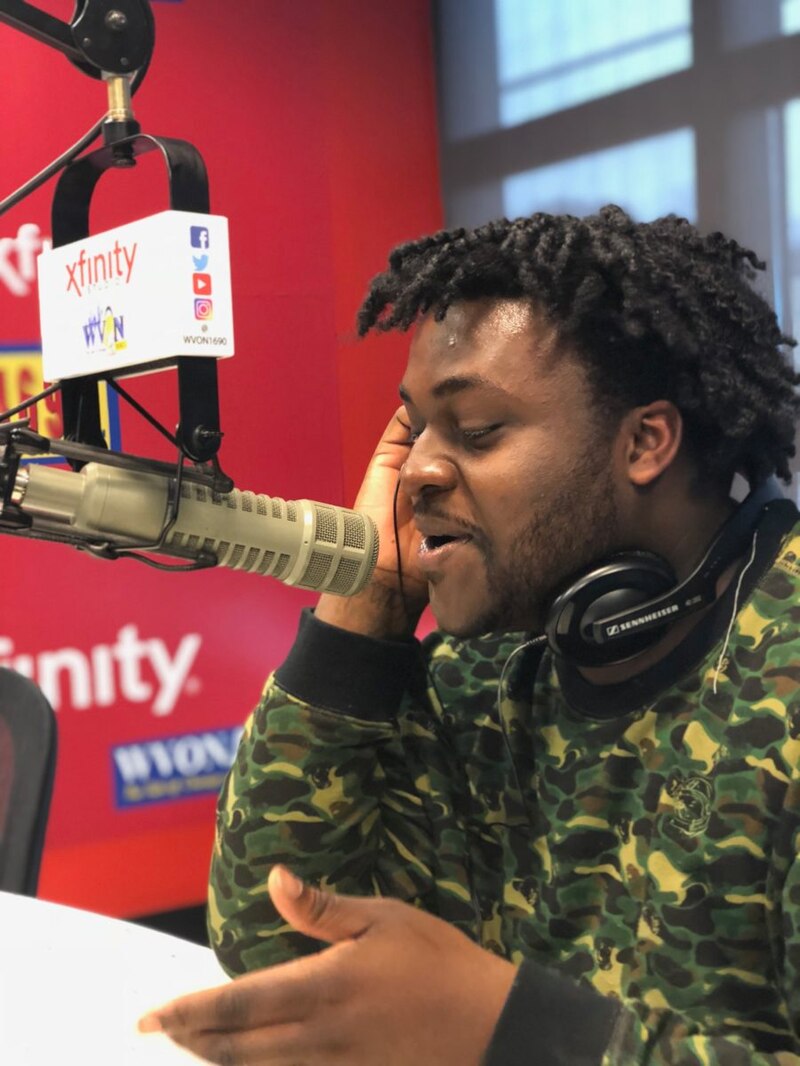
On becoming an activist: It started with me wanting a shirt. At North Lawndale College Prep, we have to wear these button-up shirts with collars, and it’s hot. One Thursday, I was seeing these different shirts, regular long-sleeve shirts. It had “Peace Warriors” going down the sleeve, a peace sign on the back, and I was like, “I want one of those.” Then I also heard that Peace Warriors get pulled out of class sometimes, and I’m like “Yeah, if we can get out of class, for sure!”
After joining Peace Warriors, it got to a point where I felt that family connection—these were some of the people I went to when I couldn’t even go to my own family. I’ve been shot at multiple times and I didn’t go to my family, because I didn’t want to put that burden on their shoulders. I went to the Peace Warriors because I knew some of them experienced the same thing, and it’s also easier to connect with people in your age range.
My nephew was shot and killed on May 28, 2017. Shot twice: once in the back of the head and once in the back. I feel like I would have done something that would have put me in a way worse spot than I’m in now if I didn’t have Peace Warriors. They came to me every day, and were like “We are here for you no matter what.” I was known as the one with all the energy. When those people saw me down, they told me,”‘You were always the one to cheer everybody up, so we have to be here for you, to get you back like that.”
What he hopes to achieve: I want people to walk away [tonight] and believe that change can happen. We might be different in a lot of ways, but we are alike in more ways than we are different. I want people to see the fact that we can’t be independent, if we want to make change across the world, we all have to come together to make this work.
We can’t try change the world with only Chicago, we can’t try to change the world with only Florida. It takes everybody. We need people from every region to put their input on so we can get total change.
"Be smart with campaigns. If you’re gonna march, make sure you’re doing it in a community that can really change something."
Trevon Bosley
Roseland native Trevon Bosley is a rising junior at Southern Illinois University Edwardsville. He joined Bold Resistance Against Violence Everywhere, or B.R.A.V.E., a peer youth council run through the St. Sabina youth program, in 2010. He is also a member of Chicago Strong.
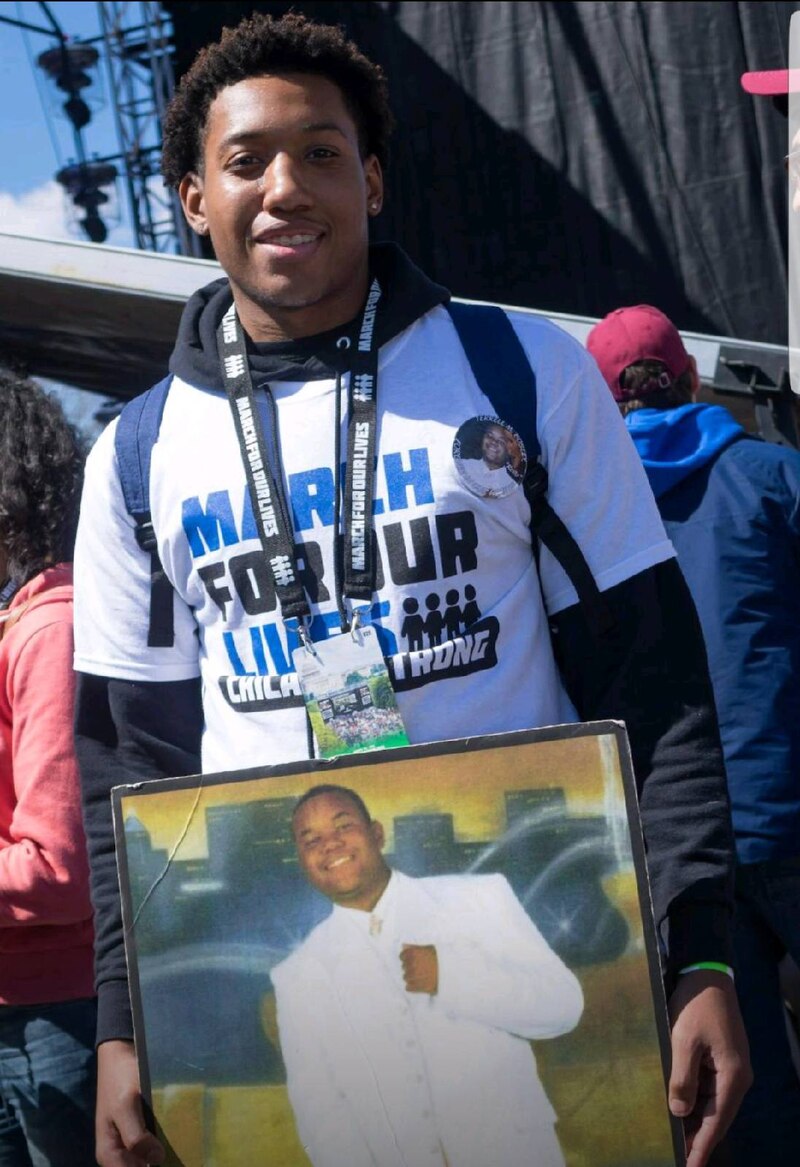
On becoming an activist: On April 4, 2006, my brother was murdered while attending band rehearsal at church. He was outside helping a friend with drums. Someone fired shots at them and he was shot in the shoulder. After that, my parents got in contact with (the Rev.) Michael Pfleger at St. Sabina, and he introduced me to B.R.A.V.E.
The main things that the older B.R.A.V.E. members told me was to be smart with campaigns. If you’re gonna march, make sure you’re doing it in a community that can really change something. They told me to just be effective when you’re planning and strategizing your movement.
A while back [around three years ago], we did a voter registration campaign. The strategic thing was how we planned to tackle violence. We know that we have a lot of gun violence in Chicago, but we have to understand why. We noticed that the elected officials at the time weren’t allocating resources to anti-violence initiatives, and the only way you can get politicians to listen to you is to vote. We identified what the problem was and how to go about addressing it.
What he hopes to achieve: We’ve been doing this for a long time and we’ve been fighting for change in the community for a very long time. Tonight’s rally is going to be bigger because of the Parkland influence. We’ve been fighting in Chicago for a very long time for peace, but only recently has the national media really wanted to cover our everyday shootings. The Parkland influence is giving us the platform, it’s led to our voices finally being heard about everyday shootings.
"I want to make sure that we tell our stories ourselves, and not have social media or the news tell our stories because they always twist it around, and then you’re like: That’s not me."
RieOnna Holmon
RieOnna Holmon, 15, attends Gwendolyn Brooks College Prep in Rosewood, and she lives in Woodlawn. She joined B.R.A.V.E in 2017, where she received mentorship from older members such as Trevon. Most recently, RieOnna became the president of B.R.A.V.E.
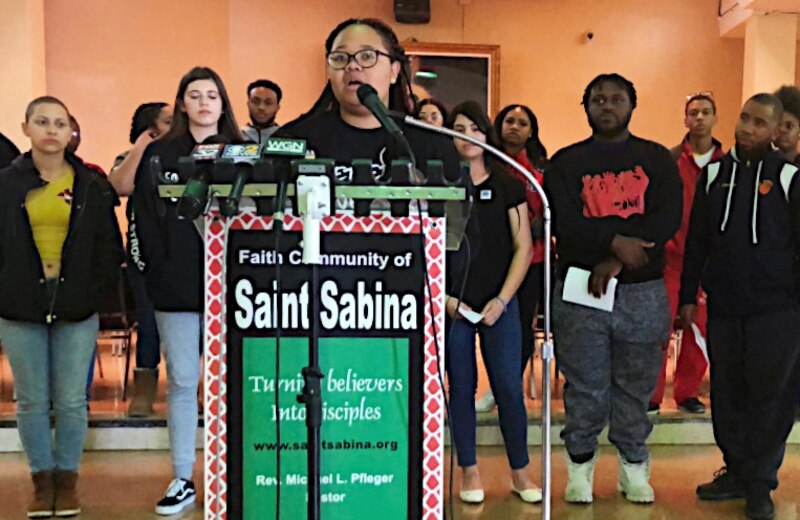
On becoming an activist: I joined B.R.A.V.E. last summer when I did an internship at the ARK of St. Sabina. I just started going to the meetings and taking part in all of the rallies. I see myself in these children [that I mentor], how I was naïve and didn’t really know anything. Being able to teach them about what is really happening out there really shows me that the youth need to be educated about what’s going on.
What she hopes to achieve: [Tonight,] I want to make sure that we tell our stories ourselves, and not have social media or the news tell our stories for them because they always twist it around and you’re always like, “That’s not me.”
It happens a lot. People will talk about someone they lost, and [media outlets] will turn it around being like, this “x” gang member. But we didn’t tell you that. I know now that I have to actually get out there and tell it for myself, because otherwise what’s out there could not be true or another side of the story.
Editor’s note: The story has been updated to reflect that Diego Garcia led 50 teenagers to the March for Our Lives rally in Washington, D.C. in March, not 15 teenagers.

